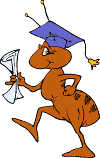Entomology, Department of
First Advisor
Doug Golick
Date of this Version
12-2019
Document Type
Article
Citation
Ingram, E.M. (2019). A mixed-methods study of entomology incorporation in U.S. secondary science instruction (Doctoral dissertation). University of Nebraska–Lincoln.
Abstract
To encourage understanding and appreciation of insects, entomology education advocates have supported and encouraged K-12 teachers to integrate insects and insect-related content into formal science instruction. However, research examining how and why science teachers incorporate entomology into secondary science courses is limited.
A sequential explanatory mixed-methods research study was conducted to address this gap. The study was conducted in two phases. During the first phase, quantitative survey research was conducted with a representative sample of 254 U.S. secondary life science teachers. During the subsequent qualitative phase, follow-up interviews were conducted with a purposeful sample of 18 survey participants and an opportunistic sample of three secondary science teachers with experience incorporating entomology content in their science instruction. Data were analyzed separately, and quantitative and qualitative findings integrated to form a more complete understanding of how and why teachers’ incorporate entomology content in U.S. secondary science instruction.
Results from this study (1) characterize entomology incorporation practices in a representative sample of U.S. secondary science classrooms, (2) identify factors that facilitate or hinder secondary science teachers’ entomology incorporation efforts, and (3) elicit teacher perspectives on how K-12 entomology education resources or supports can be designed to meet teacher needs.
Findings indicate that a diverse assortment of insects are commonly incorporated into classrooms, but that incorporation generally occurs less than once per month. Lesson plans and live insects are commonly used to support incorporation of entomology content. Factors that impact teachers’ entomology incorporation efforts include teachers’ attitudes and beliefs, prior entomology experiences, as well as external variables such as amount of instructional time available and fit with approved curriculum or state or national science standards. These insights are especially valuable as they come directly from in-service life science teachers who are in the best position to identify obstacles and provide their feedback on preferred resources to address identified barriers. Recommendations for entomology and science education organizations include development of appropriate resources to address potential gaps in curriculum and professional development offerings.
Advisor: Doug Golick
Included in
Entomology Commons, Science and Mathematics Education Commons, Secondary Education Commons


Comments
A DISSERTATION Presented to the Faculty of The Graduate College at the University of Nebraska In Partial Fulfillment of Requirements For the Degree of Doctor of Philosophy, Major: Entomology, Under the Supervision of Professor Doug Golick. Lincoln, Nebraska: December, 2019.
Copyright (c) 2019 Erin M. Ingram